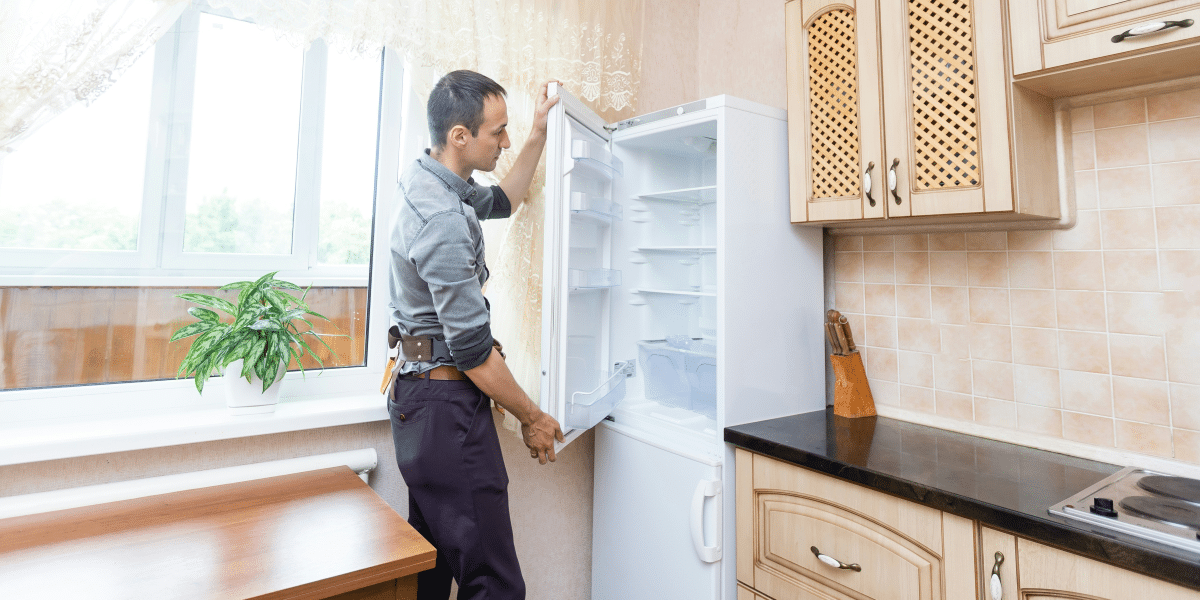By: SEO Mavens
Extreme weather is nothing new in Canada, and our homes and appliances are constantly adjusting to the temperature outside, no matter if sweltering summer heat waves or bone-chilling winter freezes are happening. But when those temperatures go up and down like a yo-yo, one appliance works extra hard to keep our food fresh: the refrigerator. But how often do you think about how your fridge copes with these extreme conditions? More importantly, how can you help your refrigerator run at peak efficiency throughout the year?
Welcome to “Chilling Out,” where we will discuss how very bad weather can affect your refrigerator’s performance and give some rather practical fridge repair and maintenance tips that will keep it working smoothly in extremely hot or extremely cold weather, be it 35°C or -35°C outside.
The Impact of Extreme Weather on Your Refrigerator
Your refrigerator works to keep the inside at one temperature, usually between 1°C and 4°C, whatever the conditions on the outside are. During the great changes in temperature at both extreme sides of the spectrum, your refrigerator starts to work more in order to keep it at this range. The following are the different ways weather can impact your refrigerator:
1. Summer Heatwaves: The Battle Against the Heat
It’s going to be a battle for your refrigerator this summer, as it has to fight against the continuously rising temperature inside the house. As your kitchen gets warmer, so does the circulating air that surrounds the fridge, driving it into more work to cool the interior.
- Challenge: Higher ambient temperatures force the compressor to work harder, increase energy consumption, and place more loads on components like the condenser coils and motor.
- Risk involved: This additional load, unless cared for, may further result in overheating, lesser cooling efficiency, or a breakdown of the whole system, leading to expensive fridge repairs.
2. Winter Freezes: The Cold Truth
If you think cold weather means your fridge will be churning out a break, you’re sadly mistaken. During deep-freeze winters, the outside temperature can easily drop below freezing, which will affect your refrigerator when it is in a colder part of your house such as the garage or basement.
- Risk: Cold weather can trick your fridge’s thermostat into thinking it doesn’t need to run as often, and it may raise the interior temperature of your refrigerator enough to spoil your food.
- It may also over-freeze the freezer section, forming frost inside. This can severely affect the inner components of your appliance and decrease its lifespan.
Tips to Keep Your Refrigerator Running Efficiently in Extreme Weather
Now that we understand how very extreme weather conditions affect your refrigerator, let’s dive into some practical maintenance tips that could help it run efficiently throughout the year.
1. Clean Condenser Coils Regularly
Condenser coils are usually at the back or bottom of your refrigerator and are of prime importance in dissipating heat. These coils burn up after being covered in dust or debris, thus weakening their potential to dissipate heat and overworking the compressor. This is notably worse when temperatures become so hot.
- Maintenance Tip: The condenser coils need to be cleaned every 6 months. One should use a vacuum cleaner with either a brush attachment or a coil cleaning brush to remove dust and dirt from it. This simple step can help in making your refrigerator work more efficiently and last longer.
2. Keep the Fridge Well-Ventilated
Your refrigerator needs good ventilation to operate efficiently. During hot weather, leave some space around the refrigerator so that air can circulate around it. Keep the refrigerator away from direct sun, ovens, and other similar heat-emitting objects.
- Maintenance Tip: Place your refrigerator about 2 inches or more from the wall and make sure there is enough air flowing freely around it. This will keep the compressor better at cooling and will consume less energy.
3. Inspect Seals Around Doors Regularly
Some of the vital parts of your refrigerator are the seals or gaskets around its doors, as they help keep cool air inside. Whenever these seals become worn down, cracked, or dirty, cold air can escape and make the appliance work overtime, especially during times of extreme temperatures.
- Maintenance Tip: Seals around the doors can wear with time. A sign of wear can be checked by closing the door on a piece of paper and pulling it out. If this happens rather easily, it may well be time to replace the gasket. The seals will benefit from a good clean every now and then using warm soapy water to remove any dirt or debris that may have accumulated.
4. Adjust the Temperature Settings According to the Season
Severe weather dictates how you should change the settings of your fridge. If it is very hot outside, then your refrigerator setting should also be cold. If it’s winter and your refrigerator has been situated in some unheated place, you may want to set the setting to a little bit warmer so as not to freeze anything.
- Maintenance Tip: The ideal temperature for your refrigerator should be between 1°C and 4°C, while your freezer should be at -18°C. Store a fridge thermometer inside and regulate it at the right temperature.
5. Store Food Wisely
How you store food inside the refrigerator will determine efficiency. In hot weather, be stingy with overloading, as it can block air vents and curtail airflow. Store more items during cold seasons to maintain the cold air.
- Maintenance Tip: Store items in such a way that there is free air circulation. Store items that you use mostly in the front and those used less in the back. This minimizes cold air loss since the time the door stays open is reduced.
6. Defrosting of Freezer
For the freezer owners, if at one time you find it accumulating frost on its interior, it is about time you defrost. Excessive frost can block vents and lower cooling efficiency, hence increased energy consumption.
- Maintenance Tip: To avoid all these problems, when the formation of ice is over a quarter-inch thick, you should take your time and allow your freezer to defrost. Do this with care; read your manufacturer’s instructions to safely defrost, remembering afterward to clean the interior to avoid mold and bacterial buildup.
7. Perform Checks and Regular Maintenance
Regular checks for maintenance will prevent minor problems from becoming major ones. Inspect the appliance for unusual noises, leaks, and changes in operation.
- Maintenance Tip: It is vital to hire a professional refrigerator repair service to have your appliance checked at least once a year. This will ensure that all is up and running. You’ll be able to evade pricey repairs down the line as you detect the problem early enough.
Summary: Don’t Let Extreme Weather Beat Your Fridge
With the change of seasons and temperature extremes in Canada, the performance of your refrigerator needs to be best at all times. Following are some tips to follow; by doing regular maintenance check-ups, the life of the fridge would be extended and expensive fridge repair could be avoided.
Remember, a little attention can go a long way in keeping your fridge cool as the temperature outside boils over or freezes. So this year, chill out and let your fridge take on the weather with professionalism!
Published By: Aize Perez

















